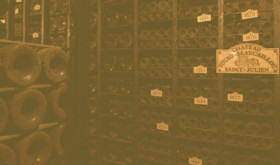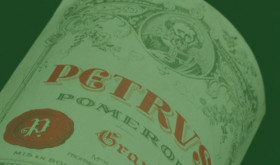
Like a nervous first date wondering if they’ve been stood up, cryptocurrency has kept alternative investors biting their nails, on the edge of their seats and glancing restlessly at the door. As a decentralised asset, it shouldn’t have been impacted by rocketing inflation, rising interest rates or other market shocks. But the theory isn’t holding up. When disaster struck, crypto investors behaved in the same way as the stock markets – if anything, they panicked more. Over recent weeks, crypto enthusiasts felt their stomachs lurch as Bitcoin plummeted to less than the value of creating it [1] … It’s a punch in the face for hopeful diversifiers who turned to crypto as an alternative asset.
In this article, we’ll uncover seven fascinating and under-used diversifying investments, that truly steer clear of the market. In theory and in practice. ‘Alternative alternatives’ to inspire you as you build (or re-build) your portfolio.
1. Litigation finance
The up-and-coming investment that almost nobody has heard of. Litigation investors help people to cover the cost of their legal suit and take a share of the damages if they succeed. This type of finance has the potential to do good for society, while offering an alternative source of revenue to investors. Most recently, it’s being used in greenwashing and climate cases, so alternative investors can help protect the environment too. The downsides are that it is risky, not possible in every country and can take a while.
2. Art
An old favourite for seasoned alternative investors, but still relatively unknown in the wider world of investing. Buying art has the double advantage that you can appreciate and enjoy your investment while you own it. Many affluent investors purchase valuable art from museums, auctions and galleries. But if you’re looking for lower price tags, you could take a chance and buy from undiscovered artists directly … It’s certainly riskier, but if you have a good eye, you might just hit the jackpot.
3. Domain names
Believe it or not, an aptly-named domain can rake in a fortune. Cars.com sold for $872 million. Carinsurance.com swept up $49.7 million. And Insurance.com went for a cool $35.6 million [2]. Not every domain name will be valuable, of course, around a third are never even used. But if you manage to buy a good one, you could reap serious rewards. Better still, this type of investment is completely uncorrelated to the stock market, meaning you can protect yourself from market shocks.
4. Whiskey
The water of life, as it’s known in Gaelic cultures, doesn’t just taste good on the lips… it can feel great on the wallet too. While whiskey may not offer the kind of eyebrow-raising returns that fine wine has, over the past years it has enjoyed a steady real return of 7.9% from 2011 – 2020 [3].
5. Comic books
It’s hard not to smile when you imagine the likes of Wonder Woman, Spiderman, or the Joker in your portfolio. But, as well as being a passion investment, comic books have enjoyed a boost in recent years. According to one alternative investment site, ‘Comics continue to trend upwards with very little signs of the market slowing anytime soon’ [4]. Like fine wine and whiskey, these are much-appreciated collectables which become rarer over time.
6. Music royalties
Another fascinating yet little-known alternative investment is in music royalties. When investors own a share of the music rights, they should profit when the sounds are played. For example, in movies, adverts, video games and even cover songs. (Although, of course, there is always the risk that people will use the music without paying up). Investors could also pick up profits from hardware sales, such as the reproduction of vinyl disks or CDs. This is generally one for high net worth investors, as price tags can start quite high. But there are exchange platforms available for cost-conscious players too.
7. Fine wine
Our favourite alternative investment is – of course – fine wine. As well as offering stable, yet strong returns of 12.6% CAGR each year, it’s an excellent diversifier too. Unlike many other high-performing assets, the value of fine wine is not correlated to the stock market. Return is largely based on the vintage year, scarcity and storage, so fine wine owners have a lot more control over the value of their investment. This can help reassure investors in times of economic turmoil. What’s more, one advantage investment-grade wine has over other alternative assets is the availability of market data to analyse and a more regular marketplace. If you’re looking to bolster your wealth against market shocks, a 1-3% allocation of fine wine could help you reduce your exposure.
Finding a truly alternative investment takes time and research. Often investors will need to stray away from the beaten track. And, as we’ve seen recently, they may also need to laser through all the crypto-sphere hype too.
Call us old-fashioned, but we believe that the best alternative investments are the ones that have been around the longest. Proving themselves decade after decade, recession after recession and beyond. If you’re interested in learning more about the benefits of investing in fine wine, we’re here to support you on your journey.
[1] Source : Finbold
[2] Source : Alts.co
[3] Source : WhiskyInvestDirect
[4] Source : Alts.co









